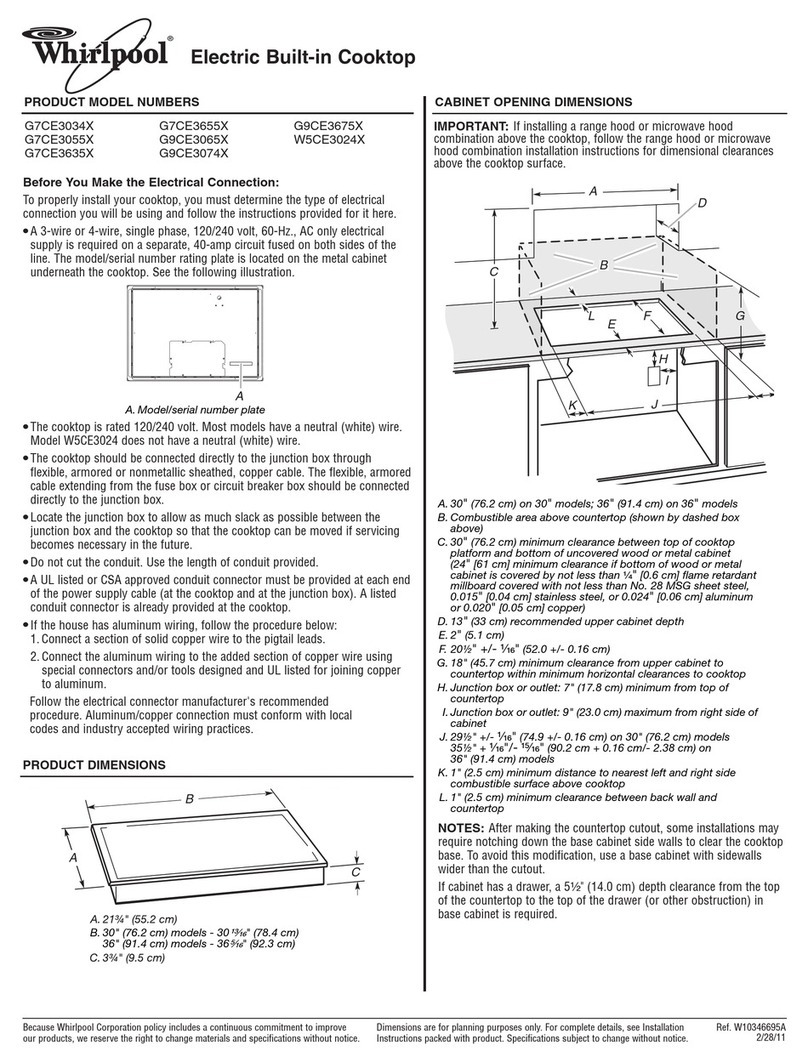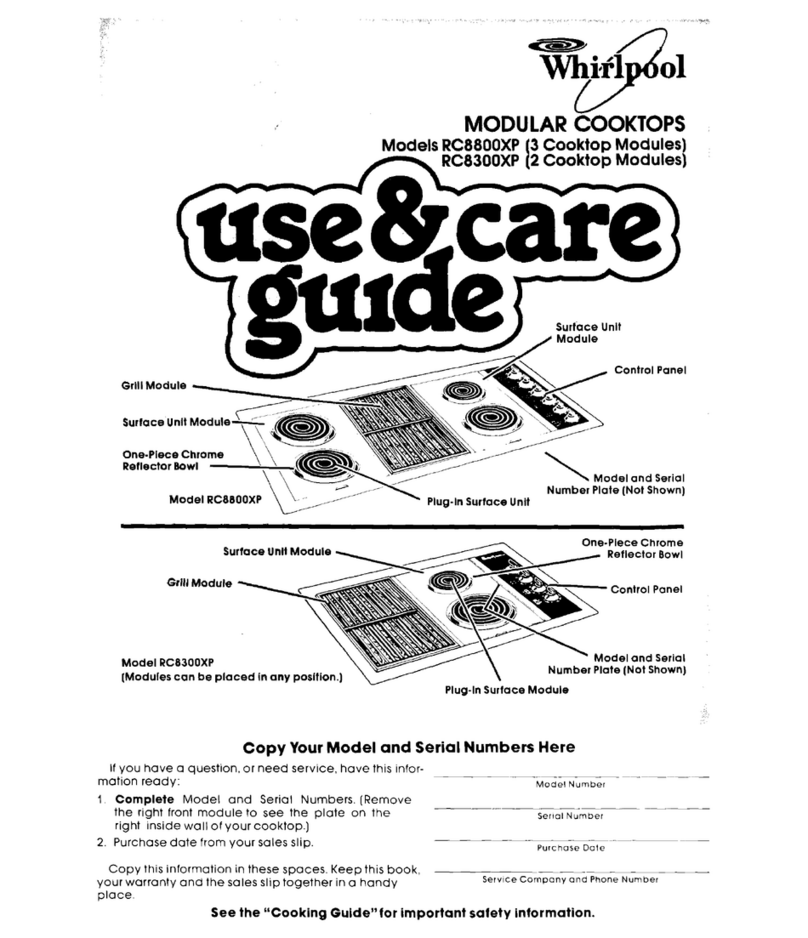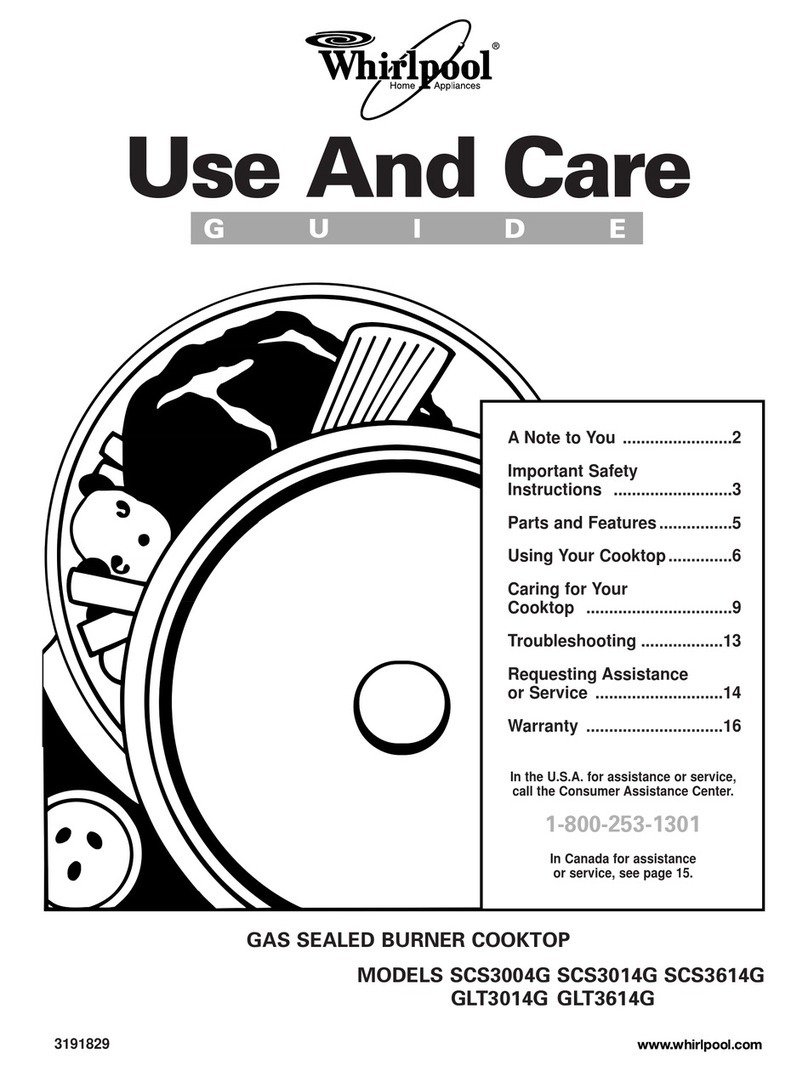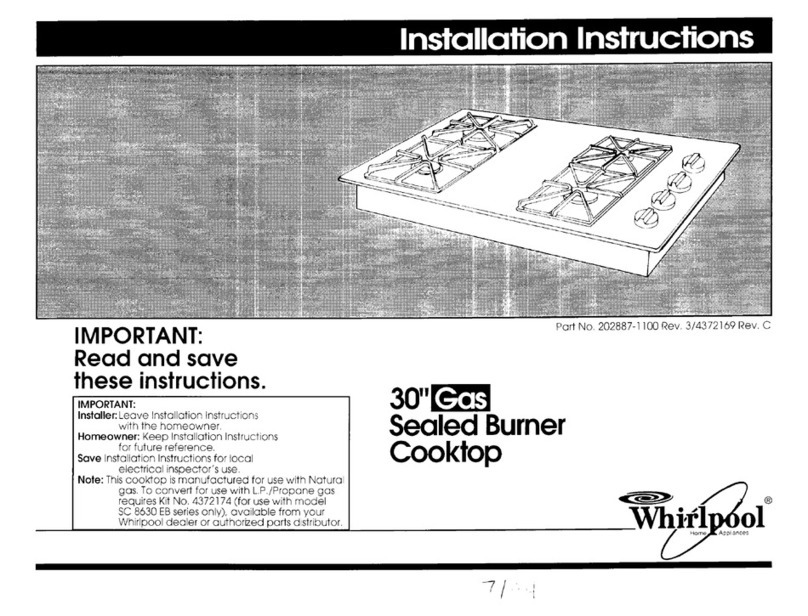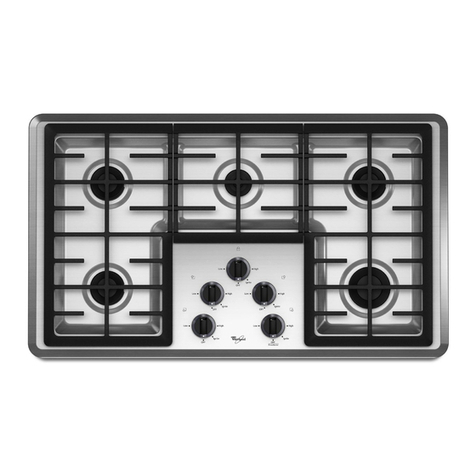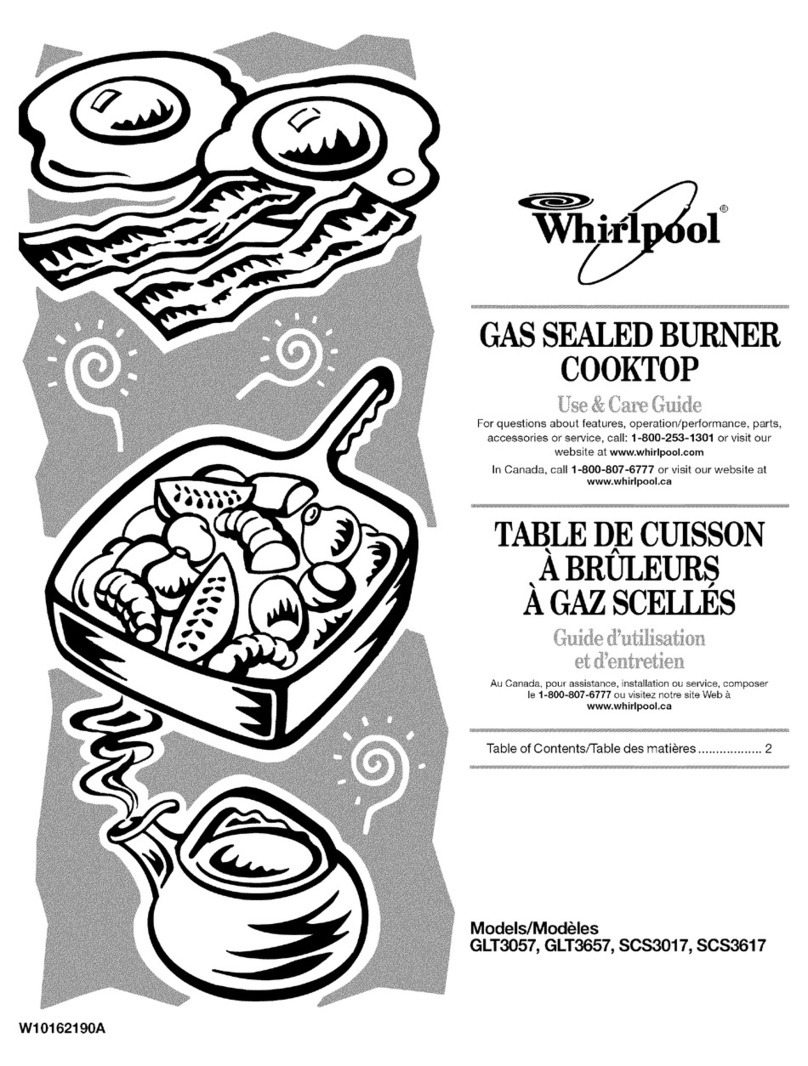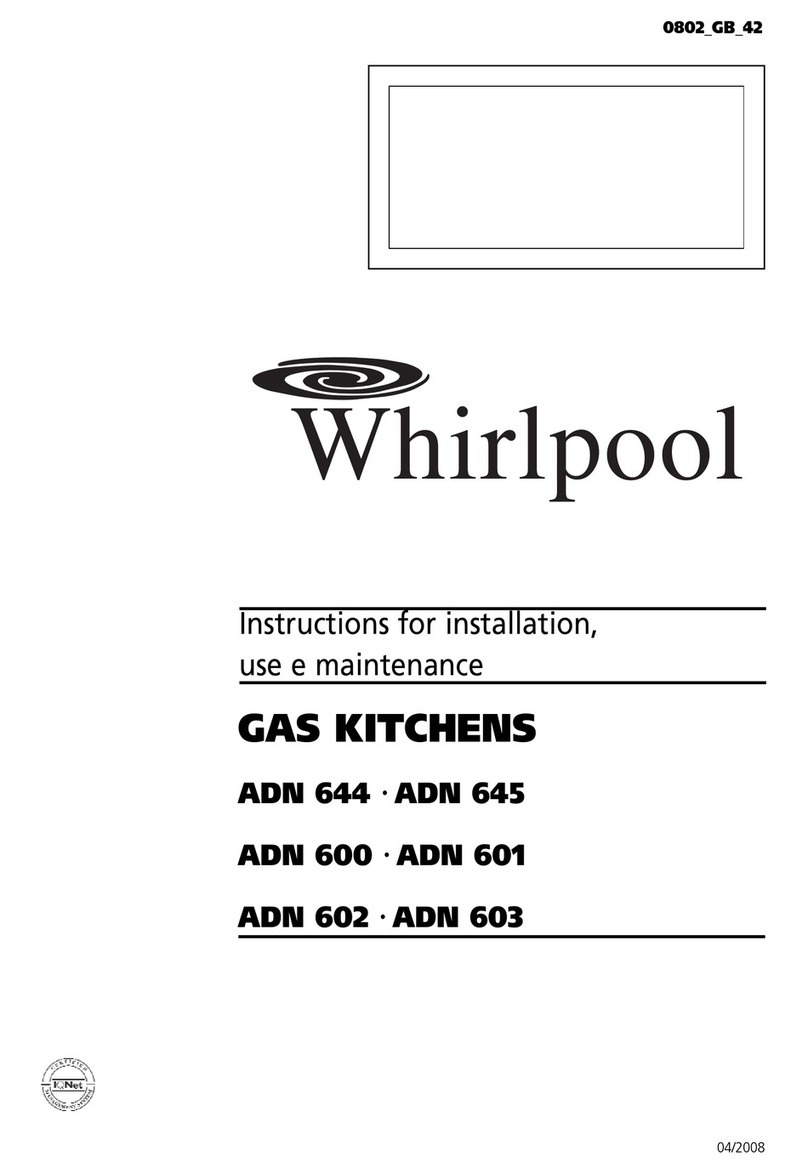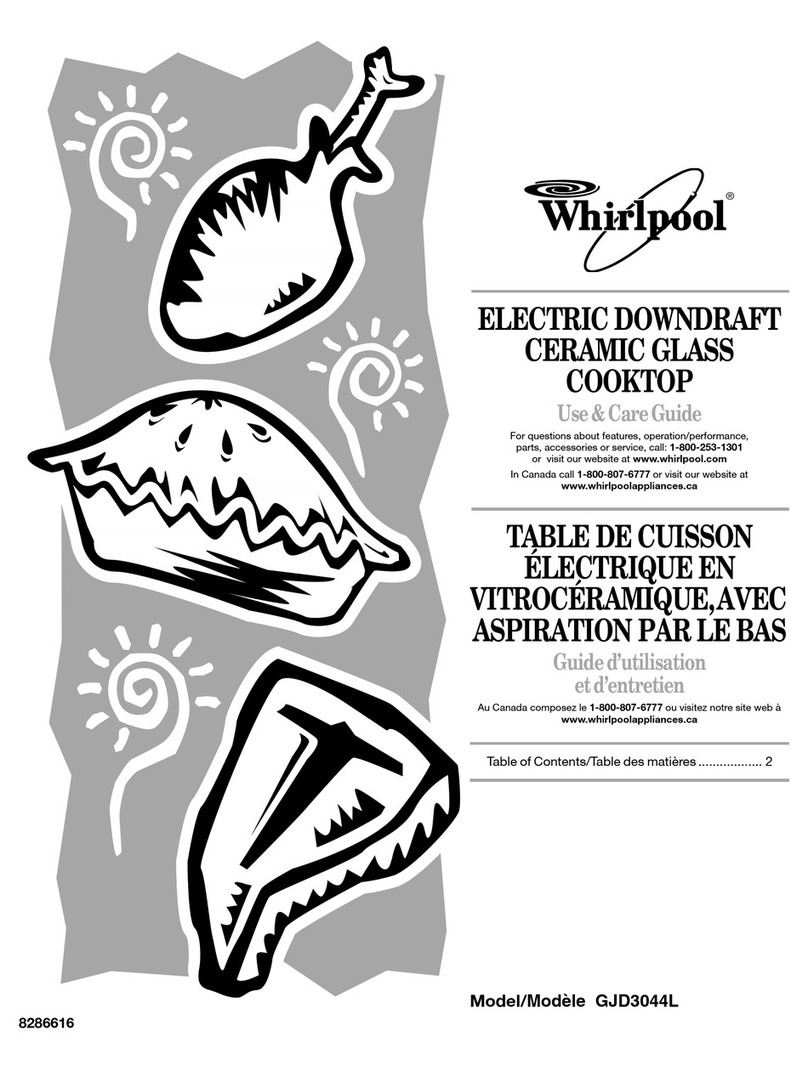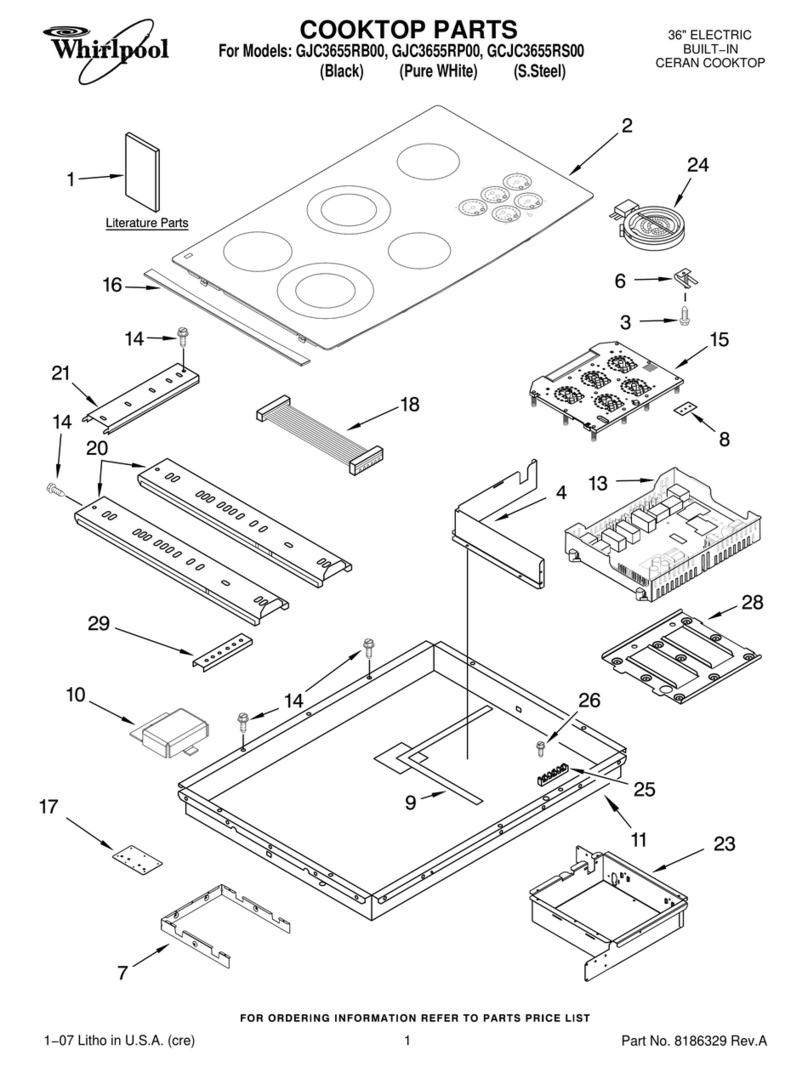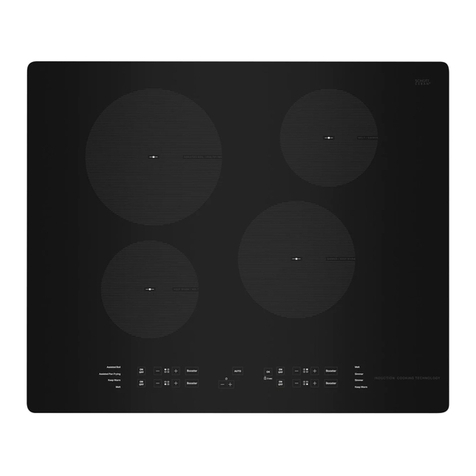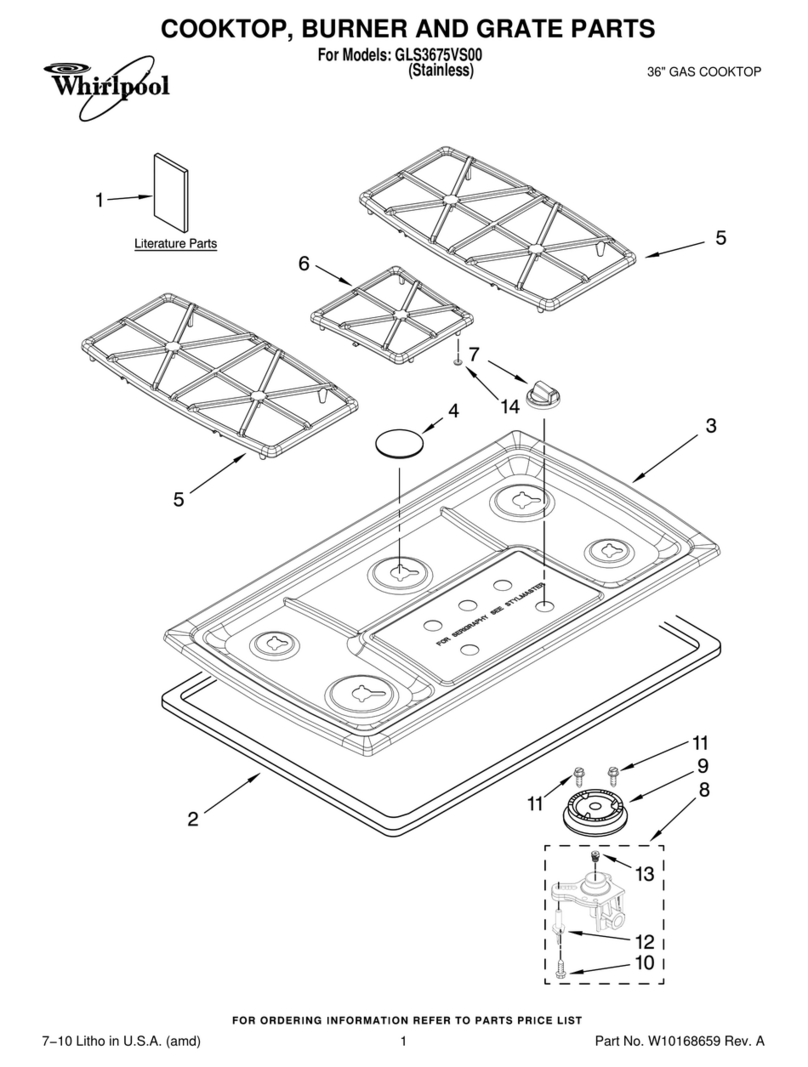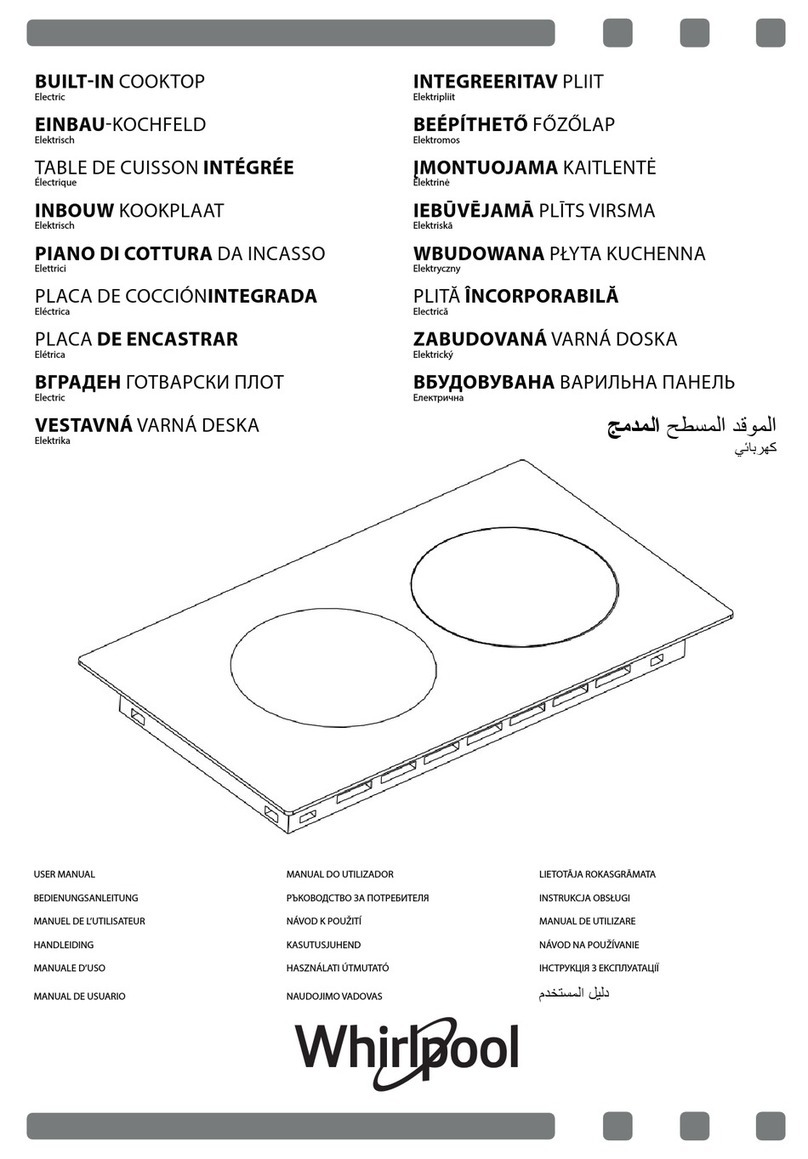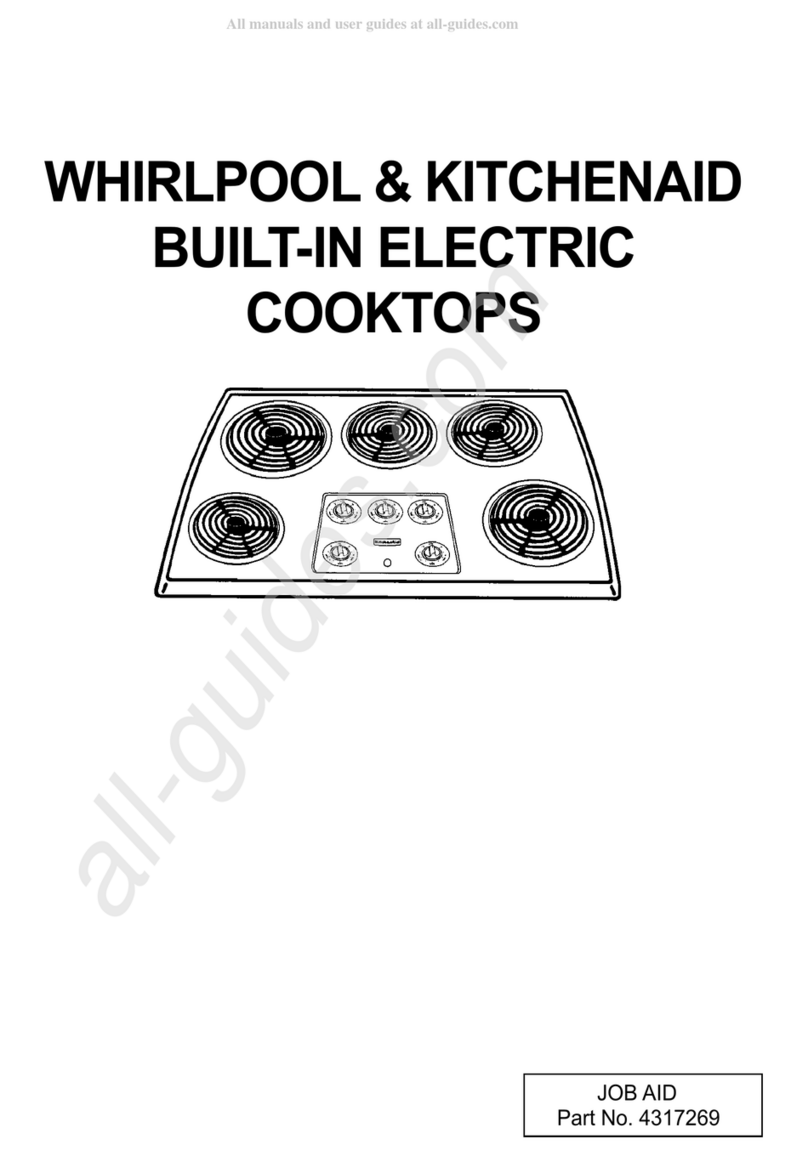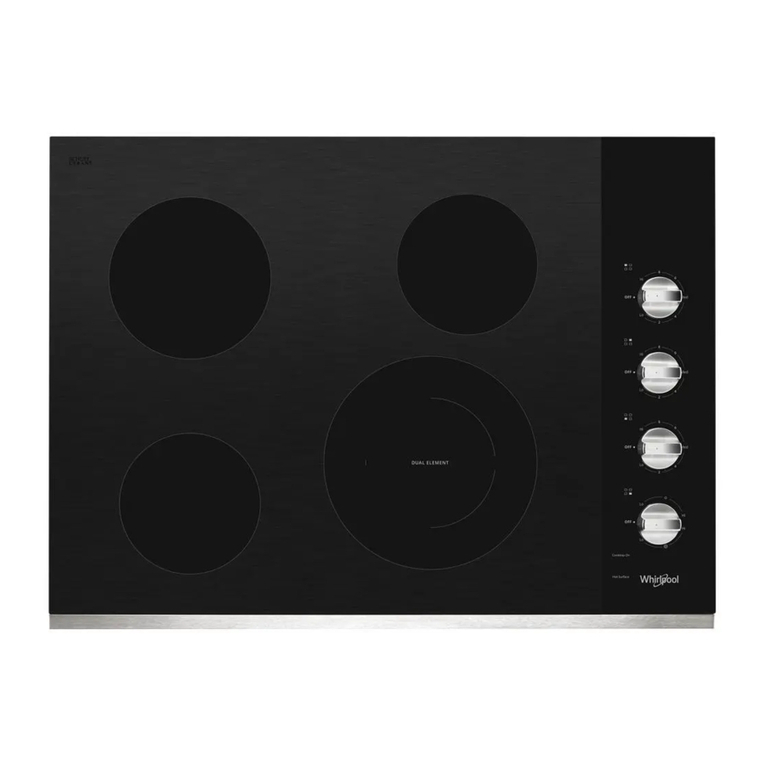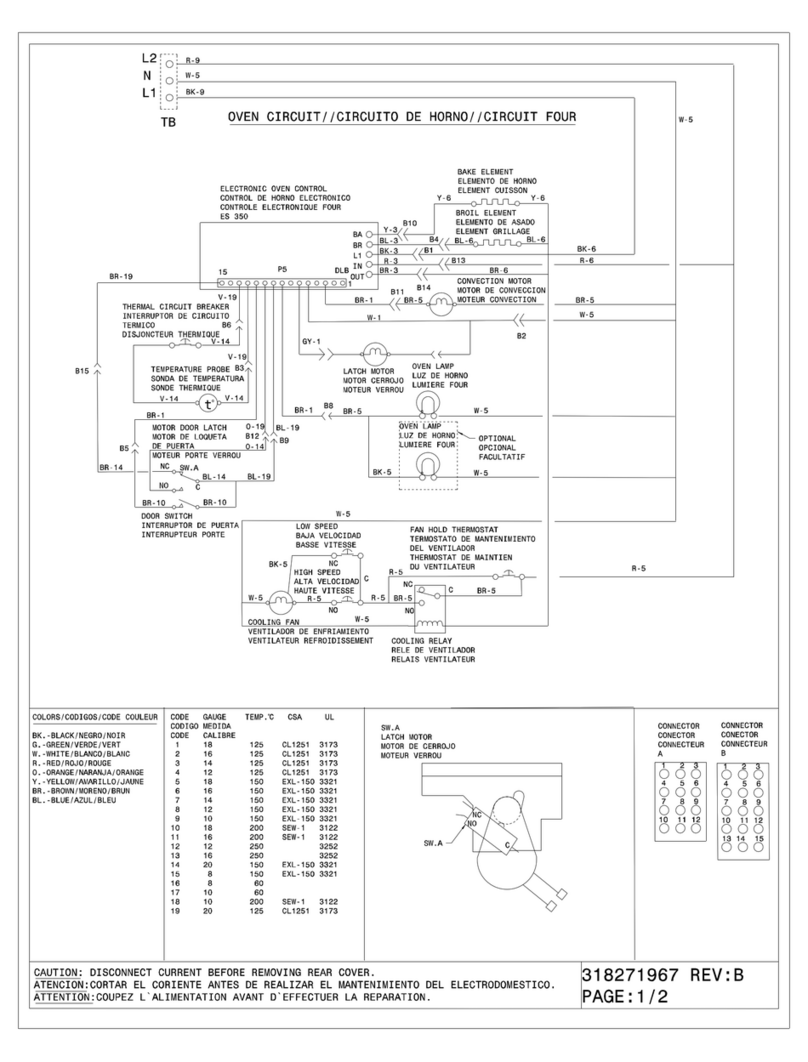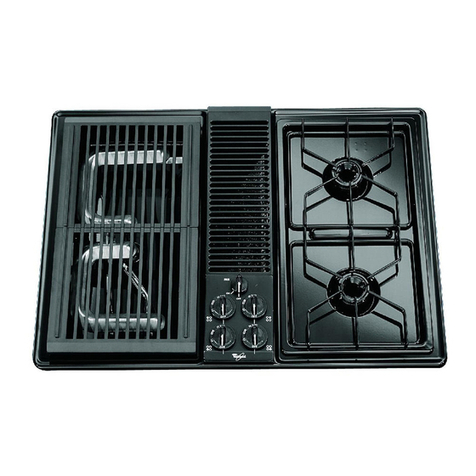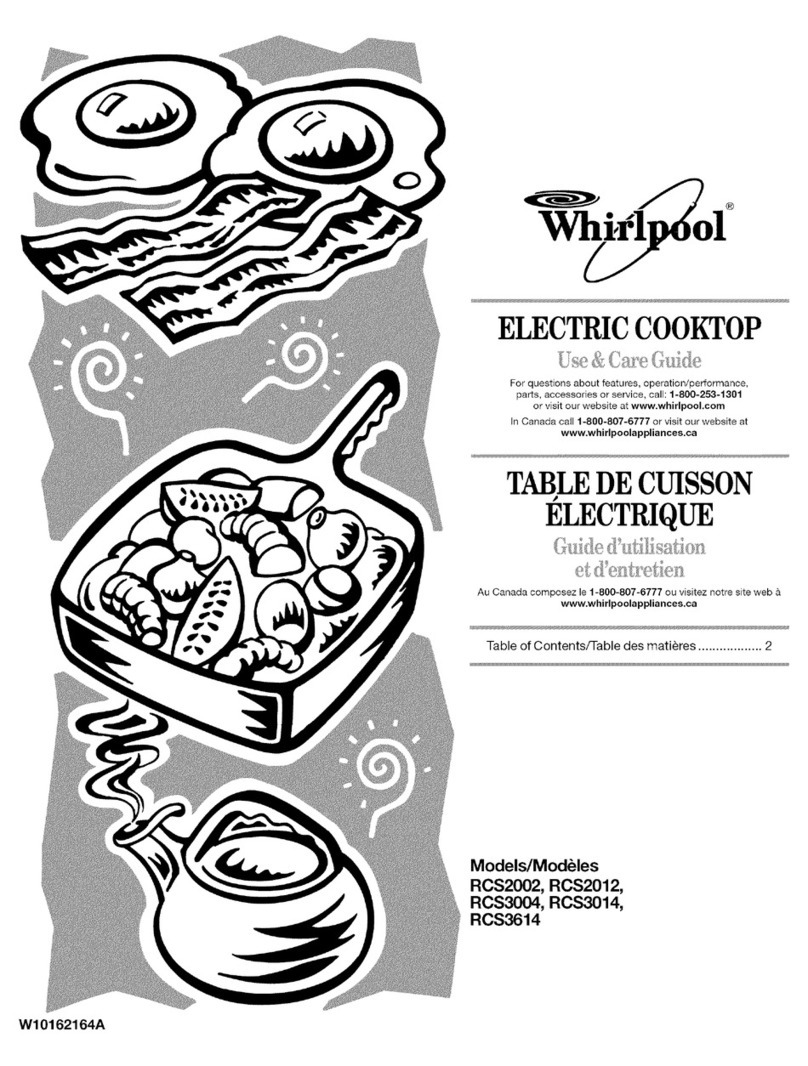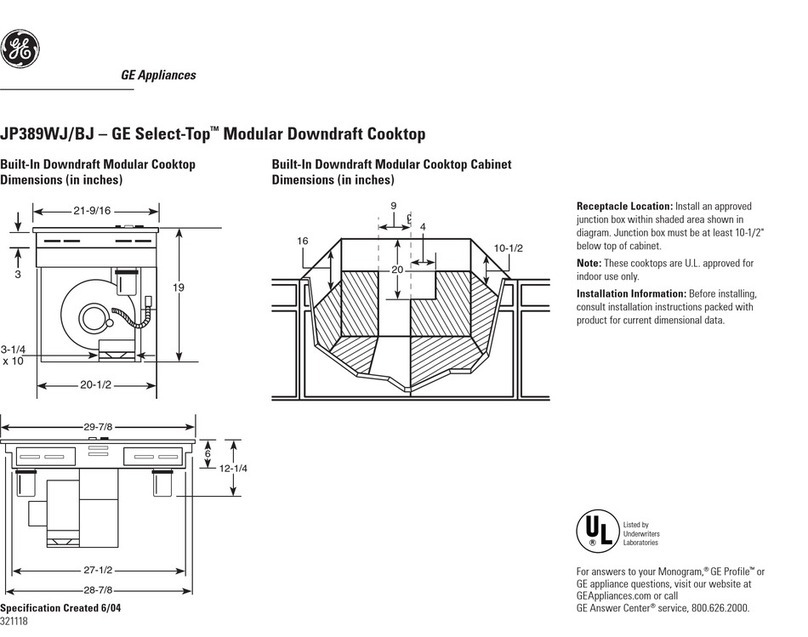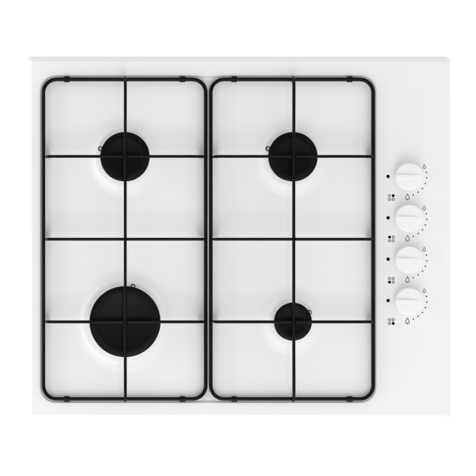Electrical
requirements Electrical
connection
Electrical Shock Hazard
- Electrical ground is required on
this
appliance.
. Improper connection d the
equipment-grounding conductor
can resuli in electrical shock.
* Check with a qualified elechician
1 you are in doubt as lo whether
the appliance is properly
grounded.
. Do Not have a fuse in ihe neutral
or grounding circuil. A fuse in the
neutral or grounding circuii could
resull in electrical shock.
Failure lo follow these inslructions
could result in an elechicol shock
or other personal injury.
A.
A three-wire, three-phase, 208.voh.
KHz. AC only electrical supply
is required on a separate circuit.
fused on both sides of the line. A
time-delay fuse or circuit breaker is
recommended. The fuse size must
not exceed the circuit rating of the
appliance specified on the serial/
rating plate located on the bottom
of the cooktop box.
B
.
THE COOKTOP MUST BECONNECTED
WITH COPPER WIRE ONLY.
c.-
Wire sizes and connections must
conform to the requirements of the
National Electrical Code, ANSI/NFPA
70 - latest edition”. and all local
codes and ordinances.
Copies of the standard listed above
may be obtained from:
” National Fire Protection Associolion
Batlerymarch Park
Quincy. Massuchuselis 02269
D.
The appliance should be connected
directly to the fused disconnect (or
circuit breaker) through flexible.
armored or non-metallic sheathed,
copper cable. lXe flexible. armored
cable extending from
the
appliance
should be connected directly to the
junction box.
E.
Locate the junction box to allow as
much slack as possible between the
junction box and the appliance so
that the cookiop can be moved if
servicing is ever necessary Do Not
cut the conduit
Electrical Shock Hazard
. Electrical ground is required on
this appliance.
. This appliance must be
connected lo a grounded.
permanent wiring system or a
grounding connector should be
connected to the grounding
terminal or wire lead on Ihe
appliance.
. D&connect power lo the junction
box.
. Do Nol connect lo the electrical
supply until appliance is
permanently grounded.
Failure (0 do so could resuli in
electrical shock, serious injury.
or death.
This appliance is manufactured with a
frame-connected. green or bare,
grounding wire.
Connect the appliance cable to the
junction box through a U.L-listed
conduit connector.
Complete electrical connection
according to local codes and
ordinances.
A.
Where
local
codes permit connecting
the frame-grounding conductor to the
neutral (white) Junction box wire:
B.
Where local codes Do Not permit
connecting the frame-grounding
conductor to the neutral (white)
junction box wire:
Cable horn
power supply
JunctIonbox
Figure 2
1. Disconnect the power supply.
2. Connect the two black wires
together. Then connect the two red
wires together. Cap the unused white
wire. (See Figure 2.)
3. Connect the green or bare ground-
ing wire from the appliance cable to
a grounded wire in the junction box
or to o grounded. copper. cold water
pipe.“”
4. Do Not ground fo a gas supply pipe
or
hat water
pipe.
Do Not connect to
electrical supply until appliance is
permanentty grounded. (See Figure 3.1
““Grounded. cold water pips must have
metal conk&y to ele~tricol
ground
and not be intempted
by
plasHc.
rubber. or other elechkal l~ulating
connectors arch as hoses. filliros.
warners or golets (including &er
meteror oump). Any electrical
lnruloling connector should be jumped
OSshown with a kngm of No.-4 copper
wire securely clomped to bare
metal ot both ends
GaouNLlING CLAMP
toWe horn cooktop
Figure 1
copper
2. Connect the green (or bare)
appliance cable wire with the
neutral wire in the junction box.
3. Connect the two black wires
together. Then connect the two red
wires together.
(See Figure 1.)
grourdng
Figure 3
F.
A U.L.-listed conduit connector must
be provided at the junction box
Panel B
